I want to estimate two breakpoints of a function with the next data:
df = data.frame (x = 1:180,
y = c(0, 0, 0, 0, 0, 0, 0, 0, 0, 0, 0, 0, 0, 0, 0, 0, 0, 0, 0, 0, 0, 0, 0, 0, 0, 0, 0, 1, 0, 0, 0, 0, 0, 0, 0, 0, 0, 0, 0, 1, 2, 0, 0, 0, 2, 2, 4, 2, 2, 3, 2, 1, 2,0, 1, 0, 1, 4, 0, 1, 2, 3, 1, 1, 1, 0, 2, 0, 3, 2, 1, 1, 1, 1, 5, 4, 2, 1, 0, 2, 1, 1, 2, 0, 0, 2, 2, 1, 1, 1, 0, 0, 0, 0,
2, 3, 0, 3, 2, 0, 0, 0, 0, 0, 0, 0,0, 0, 0, 0, 0, 0, 0, 0, 0, 0, 0, 0, 0, 0, 0, 0, 0, 0, 0, 0, 0, 0, 0, 0, 0, 0, 0, 0, 0, 0, 0, 0, 0, 0, 0, 0, 0, 0, 0, 0, 0, 0, 0, 0, 0, 0, 0, 0, 0, 0, 0, 0, 0,0, 0, 0, 0, 0, 0, 0, 0, 0, 0, 0, 0, 0, 0, 0, 0, 0, 0, 0, 0, 0))
# plotting y ~ x
plot(df)
I know that the function have two breakpoints such that:
y = y1 if x < b1;
y = y2 if b1 < x < b2;
y = y3 if b2 < x;
And I want to find b1 and b2 to fit a kind of rectangular function with the following form
Can anyone help me or point me in the right direction? Thanks!




